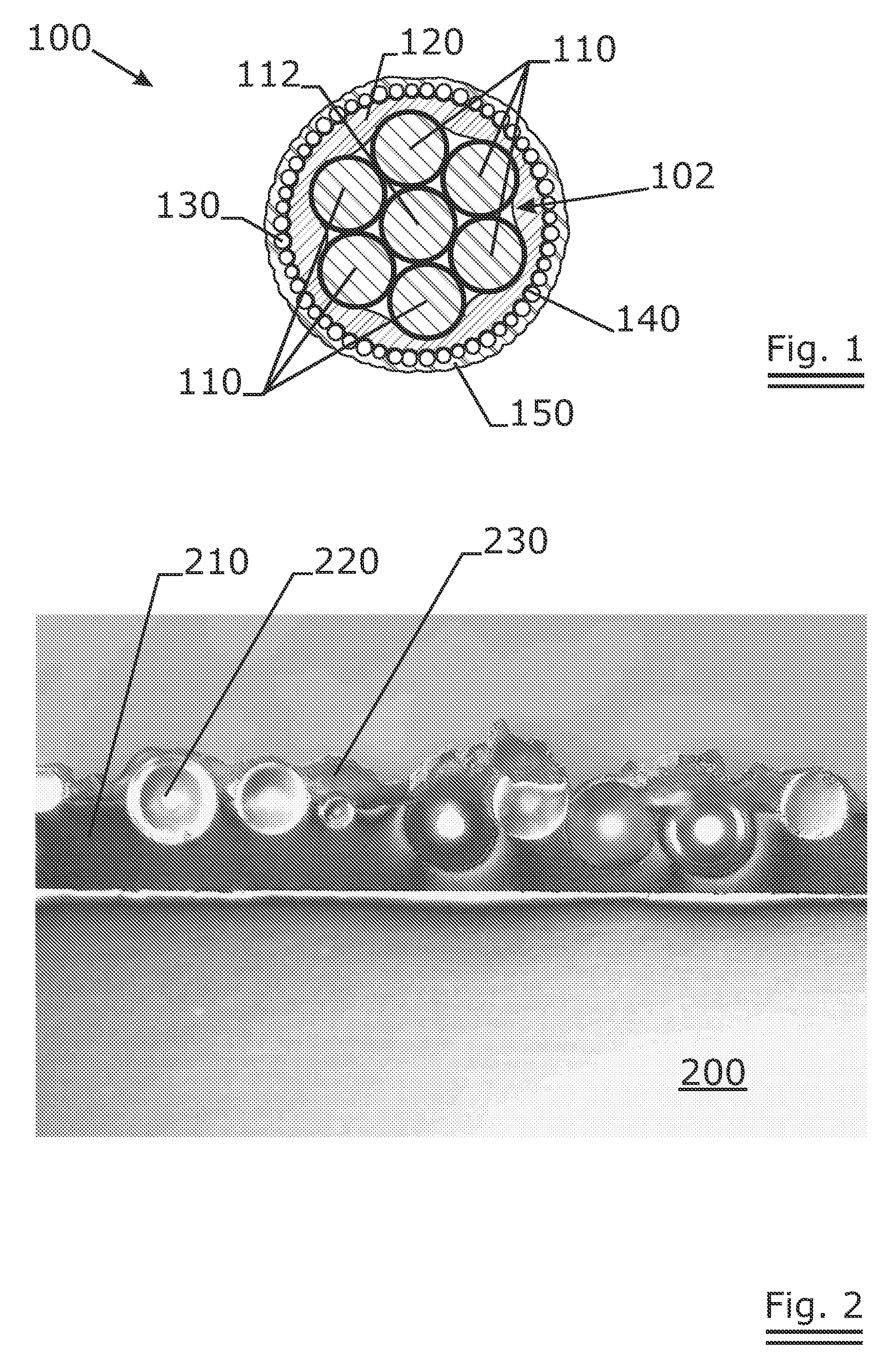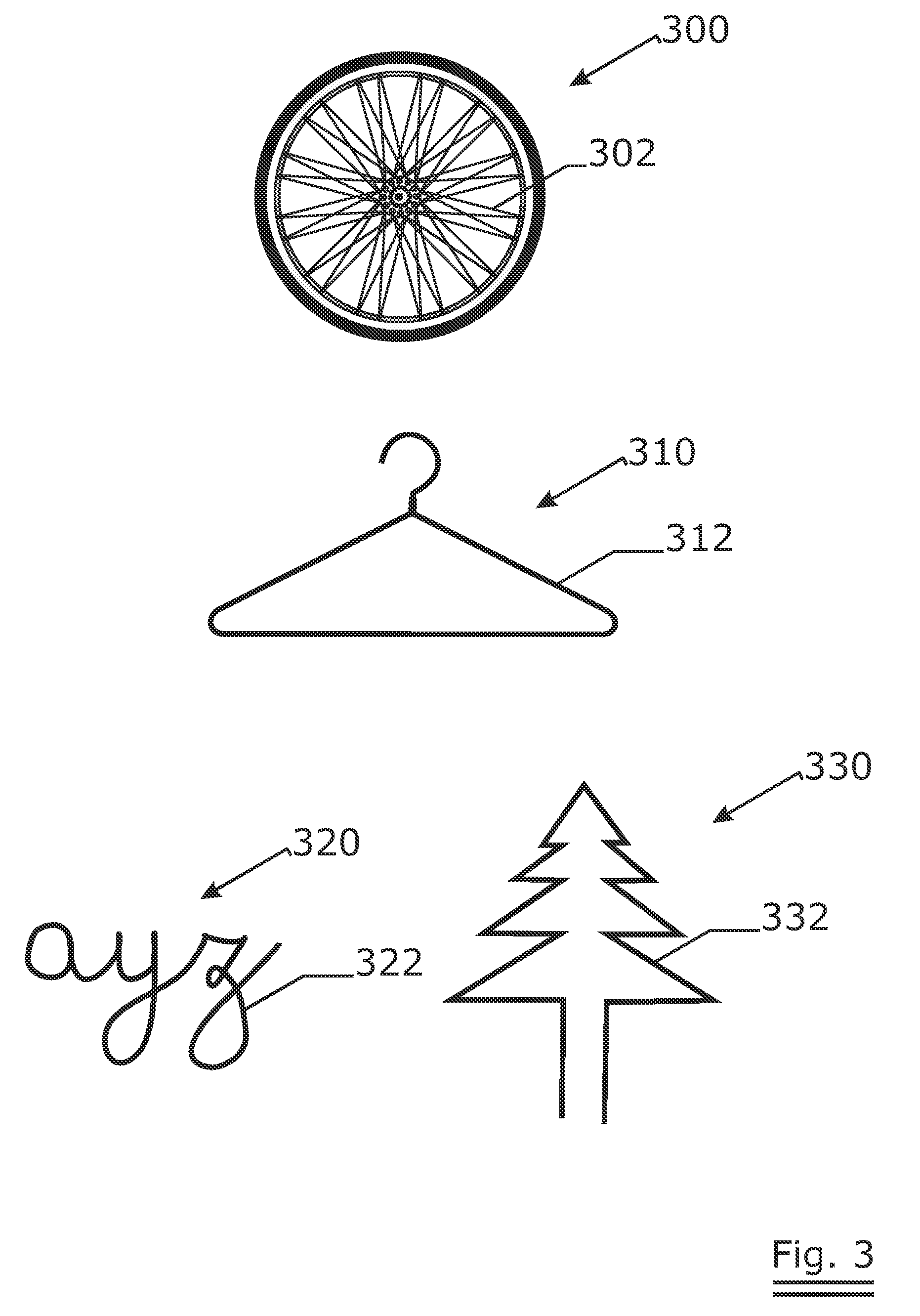Retroreflecting Elongated Metal Wire Product
a technology of metal wire and retroreflective tape, which is applied in the direction of insulated conductors, cables, textiles and paper, etc., can solve the problems of retroreflective tape not being used on flexible substrates such as strips or rope like materials, strip loosening from products, etc., and achieves the effect of adding visual appeal
- Summary
- Abstract
- Description
- Claims
- Application Information
AI Technical Summary
Benefits of technology
Problems solved by technology
Method used
Image
Examples
Embodiment Construction
[0023]A first preferred embodiment is shown if FIG. 1. There a steel strand 102 comprising six steel wires 110 that are twisted around a core wire 112 with a pitch of 22 mm in the ‘S’ lay direction is shown. The core wire has a diameter of 0.45 mm and the outer wire a diameter 0.40 mm. A first layer 120 of polyethylene terephtalate (PET) is extruded around the steel strand. The PET coating thickness varies between 110 and 20 μm. In this first coating layer beads 130 are partly embedded (note that the items in the embodiment are not drawn to scale in the figure). The beads have an average diameter of 90 μm with a range between 75 and 105 μm. The beads are partly embedded in the coating with a depth of between 25 and 50% of their diameter, although some of them are buried deeper into the coating. The back of the beads 140 is silver coated. On top of the beads a clear polyacryl coating 150 has been applied by spraying a polyacryl aerosol onto the elongated wire product. The coating fol...
PUM
 Login to View More
Login to View More Abstract
Description
Claims
Application Information
 Login to View More
Login to View More - R&D
- Intellectual Property
- Life Sciences
- Materials
- Tech Scout
- Unparalleled Data Quality
- Higher Quality Content
- 60% Fewer Hallucinations
Browse by: Latest US Patents, China's latest patents, Technical Efficacy Thesaurus, Application Domain, Technology Topic, Popular Technical Reports.
© 2025 PatSnap. All rights reserved.Legal|Privacy policy|Modern Slavery Act Transparency Statement|Sitemap|About US| Contact US: help@patsnap.com



